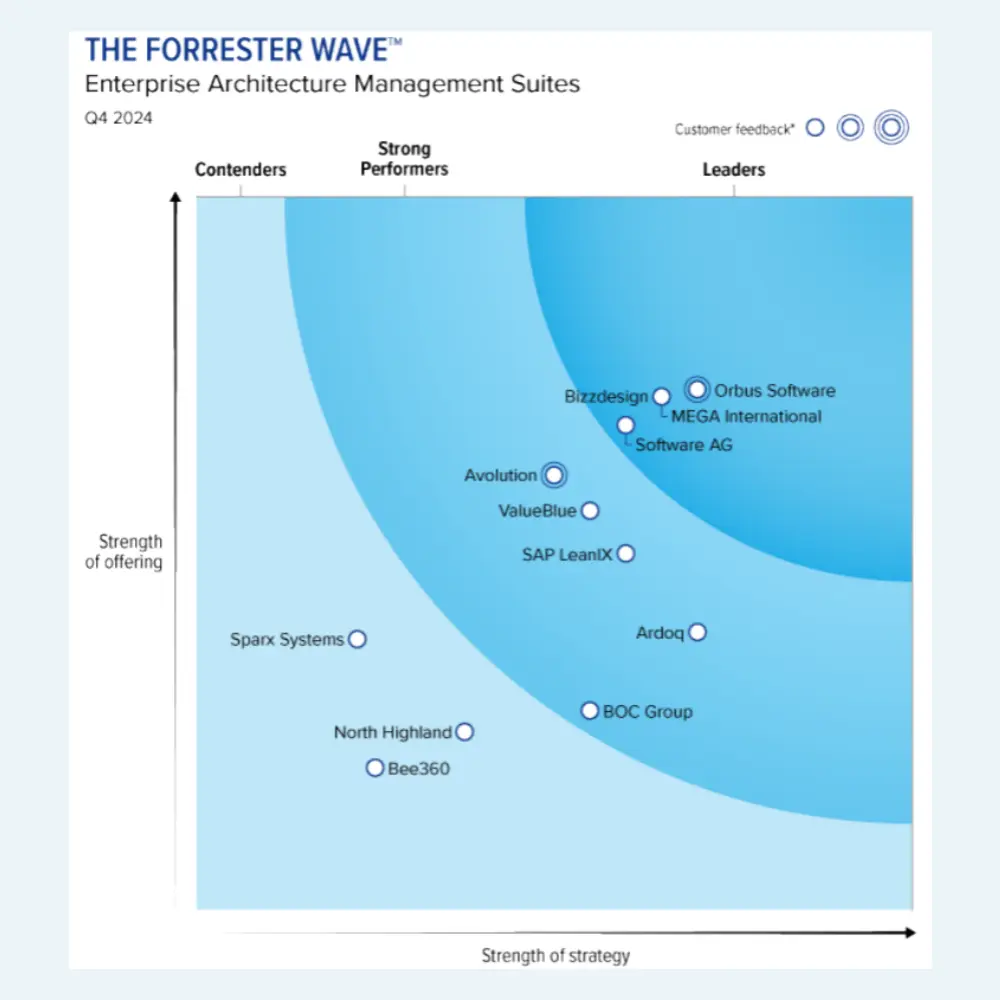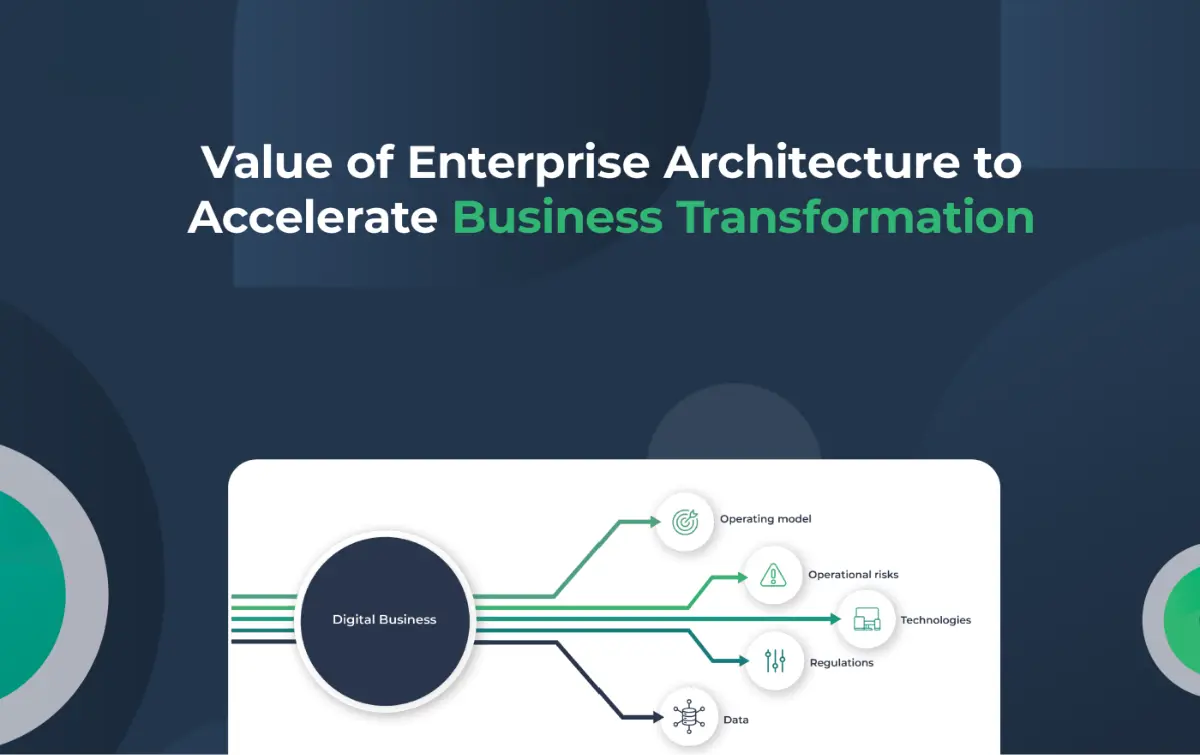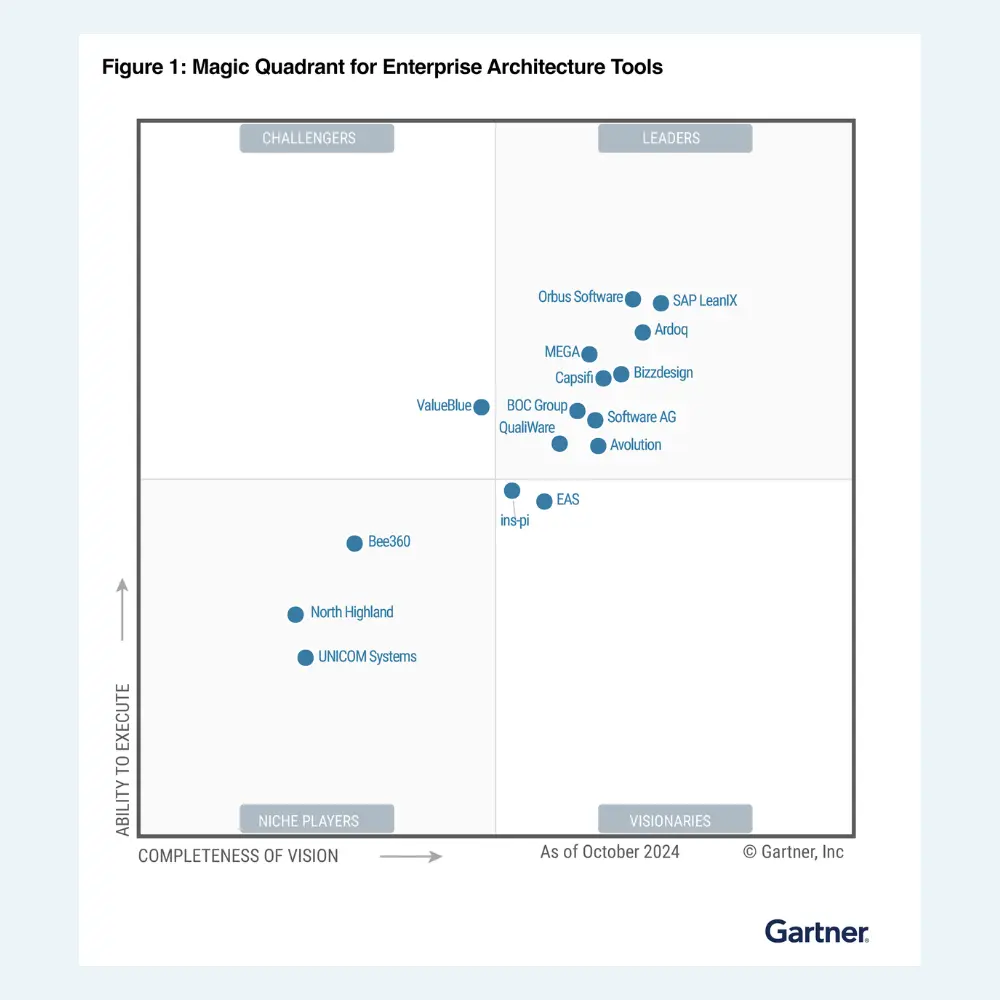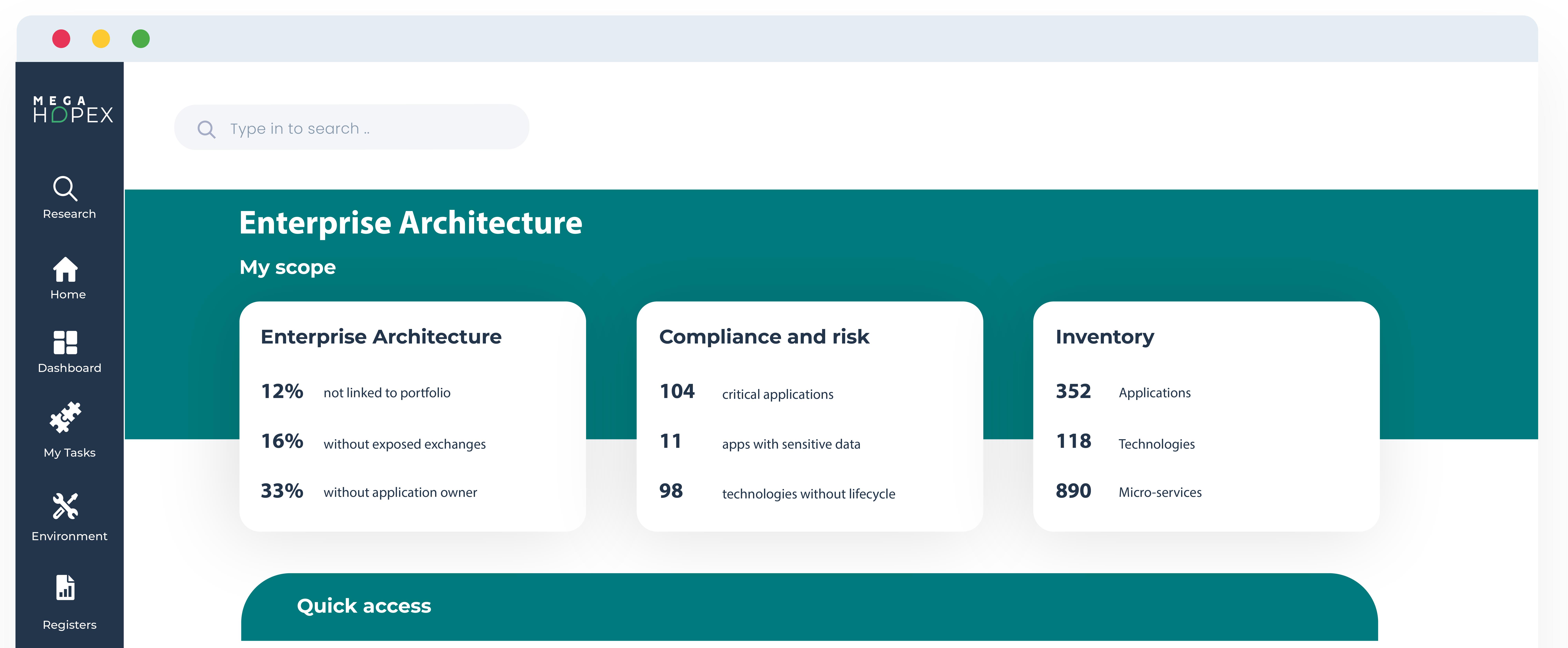
Initiating an Enterprise Architecture Project for Rapid Success
Enterprise architecture projects are essential for designing and managing an organization's IT structure. These projects create a detailed plan that aligns the IT systems with business goals, enhancing efficiency.
During the MEGA EA Exchange 2023 digital conference, three experts discussed the importance of a well-defined enterprise architecture project, best practices, planning and execution strategies, success stories, and challenges and solutions in executing EA projects: Abdallah El Kadi, General Manager of Sormena International, Leslie Robinet, Services Director at MEGA International, and Jean-François Bigey, Partner Director at MEGA International.
They shared their insights, best practices, and tips on starting and setting up an enterprise architecture project to deliver fast outcomes.
Best Practices to Effective Enterprise Architecture Projects
Executing an enterprise architecture (EA) project requires a strategic approach that balances speed, relevance, and effective communication. Three key factors can significantly accelerate the enterprise architecture process:
- Focus: Narrowing the scope of the architecture can lead to faster results.
- Relevance: Ensuring that the project remains relevant is crucial for achieving goals efficiently.
- Communication: Enterprise architects must clearly demonstrate how they add value to the organization.
To further streamline the EA process, consider these four essential steps:
Identify What’s Essential for an EA Project
When initiating an enterprise architecture project, determine the critical components and priorities that will drive the project's success.
“Don’t get bogged down by all the things you could do and identify first what you should do. Address the current business needs of your organization. What are the problems or challenges that are strategic right now? This allows you to define a scope so that you have more chances to demonstrate success in a short time. You can then build upon that baseline.”
Understand Your Strategic Value
Recognize and articulate the strategic benefits that the EA project will deliver to the organization.
Demonstrating how enterprise architecture will contribute to the strategy of the organization is very important. Architects must make sure that they have strong sponsorship and a clear understanding of the value they can bring to different stakeholders.
“Enterprise architects need to understand that success cannot be achieved in one day. It is essential to create the initial belief in the value of enterprise architecture. This will give you momentum to achieve a real strategic value contribution to the organization.”
Establish a Clear Mandate
Ensure that the project has a well-defined scope and clear support from stakeholders.
Enterprise architects must be not only accountable but also empowered to make things happen. The organization has certain obligations that are essential for an architect to successfully launch an enterprise architecture project.
For example, having a clear mandate for the enterprise architecture practice, as well as knowledge of the organizational structure, competencies, and tooling. These are the elements that are required to ensure enterprise architects can act on their accountability.
Avoid Reinventing the Wheel
Leverage existing frameworks and best practices to save time and resources.
One of the key things to a quick start is to have pertinent content. At the start of any EA project, it’s important to leverage existing knowledge and assets. Even when starting from zero, enterprise architects need to connect with different stakeholders inside the organization. These stakeholders will have existing information and standards such as a post-quantum cryptography (PQC) list of processes or connectors.
“You can lean on that for starting points - constructing a capability map, for example. It’s important to not feel like you're alone. Other external organizations have already capitalized on key elements inside the organization specific to your context.”
By focusing on these factors and following these steps, enterprise architects can enhance the efficiency and effectiveness of their projects, driving meaningful outcomes for their organizations.
Tips for a Fast ROI Enterprise Architecture Project
An enterprise architecture (EA) project should ideally last between one to three months, focusing on a well-defined scope to deliver rapid, tangible, and visible results. This approach not only ensures immediate benefits but also paves the way for future projects. Much like climbing a mountain, aiming for the summit can be daunting, but celebrating and acknowledging each milestone reached is both motivating and effective. Here are some best practices and methodologies for an effective and sustainable enterprise architecture project.
Creating a Framework: An Overview for Effective Enterprise Architecture Projects
To create a solid framework for an enterprise architecture (EA) project, begin with an overview that includes micro-projects. Start with an audit and initial analysis to help prioritize scopes and select the most relevant areas. This step is crucial for understanding the organization's current purpose and major issues. It also helps identify the services, processes, or digital solutions that provide the most value, as well as those that are obsolete, redundant, or missing.
For an effective and profitable EA project, it's essential to complete the phase of identifying the scope, use cases, and business issues. Focus on the essentials and aim to deliver high-value outcomes over a short period of one to three months. This approach ensures that the project is both impactful and aligned with the organization's strategic goals.
Initiating Momentum: A Pilot Project of Reduced Scope
Large, tedious projects can fail and lose sight of their initial objectives. To avoid this, start with a pilot project of reduced scope. First, assess the organization's available capabilities and define value chains at a high level. Identify pain points that present challenges and areas of high-value opportunity.
The services, applications, and processes involved must be clearly defined, such as a specific HR process, a portfolio of business applications, or duplicates within the organization. However, avoid delving too deeply into details to prevent complicating the process. The goal is to be fast and efficient.
This pilot project aims to validate the approach, quickly satisfy stakeholders (technical teams, business teams, and management), and communicate the results effectively to create momentum and smoothly transition to new projects.
Enhancing Visibility and Accelerating the Project Process
Enterprise architecture (EA) goes beyond organizational roles; it builds operational value step by step. To succeed in an EA project, it's crucial to support each phase and involve teams in a collaborative mode.
One key aspect is helping the "doers," whether they are technical or professional staff. This can include leveraging existing content, such as UCF regulatory compliance information, or utilizing technical tools designed for the company's architecture, such as mapping and automated workflows, and bulk loading of data.
By enhancing visibility and accelerating the process alongside the project, you ensure that all participants are engaged, and the project progresses efficiently, thereby maximizing its impact and value.
Using Key Indicators to Advocate for the EA Project
To effectively communicate the value of an enterprise architecture (EA) project beyond the project team, the use of key indicators is essential. These indicators serve as persuasive tools. While technical indicators are useful, they generally resonate only with the project team and the enterprise architect, encompassing metrics such as data completeness and freshness, and the rate of processes described by models. These are considered first-level indicators.
At the second level, indicators should demonstrate the tangible value achieved. These vary across sectors, activities, and businesses, but common examples include the reduction in the number of requests, the rate of end-of-life requests (indicating technological obsolescence), and the number of requests for the same process.
At a broader level, third-level indicators can also be defined, such as the balance between resources allocated to maintaining the information system and those devoted to innovation. Innovation encompasses not only the creation of new applications but also the benefits provided by new value-added functionalities, sometimes enhancing existing applications.
By utilizing these multi-level indicators, you can convincingly communicate the value and impact of the EA project to a wider audience, thereby securing broader support and engagement.
Expanding or Deepening the EA Project Scope
After validating the approach, achieving initial positive results, and securing support from senior management through the pilot project, the next objective is to promptly launch subsequent projects following the same principles. These projects should have a narrow scope, be quick to deploy, and offer rapid return on investment.
At this stage, the enterprise architect faces two primary options: expanding the scope to include additional use cases or deepening the existing scope. For instance, this could involve integrating cost considerations or exploring risks alongside technical and business elements or expanding to include previously unmeasured aspects.
Most importantly, an enterprise architecture project doesn't end upon deployment. It requires ongoing monitoring and maintenance of data quality, continuous team involvement, and regular monitoring of Key Performance Indicators (KPIs) over time. It's crucial to evolve the project in sync with the company's evolution, ensuring that enterprise architecture remains aligned with organizational goals.
Enterprise Architecture Related Content
Shift from a documentation tool to an operational tool and accelerate business transformation
MEGA HOPEX for Enterprise Architecture
Request a demonstration of HOPEX for EA, and see how you can have immediate value of your projects.







